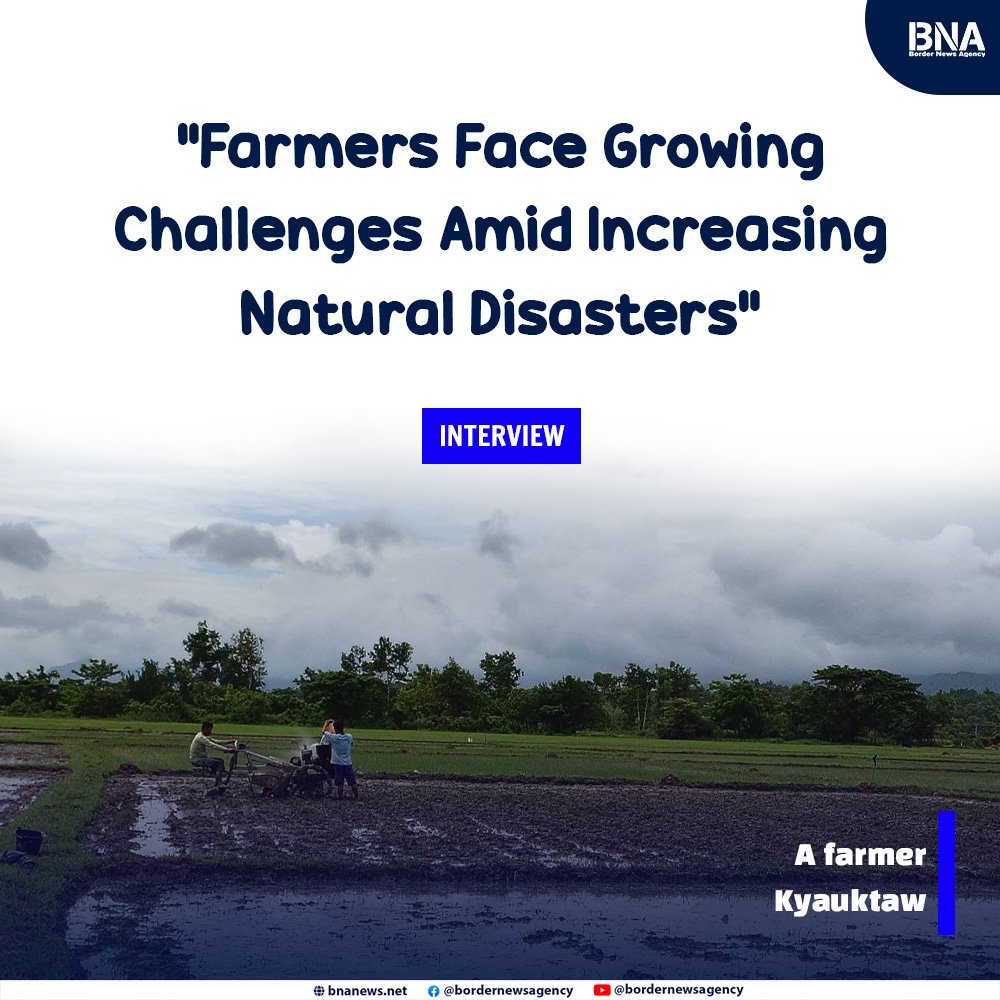Interview
Border News Agency
Kyauktaw, July 8.
Farmers say continuous rainfall in Arakan is damaging their farmlands.
Farmers say the flooding of the farmland has led to poor rice germination, submerged crops, and plant decay.
A farmer from Kyauktaw spoke to Border News Agency about the situation.
“In our Rakhine region, we haven’t seen such heavy and continuous rain in the past six decades. It’s been raining non-stop, every day, without pause. The paddy seeds we sowed back in June couldn’t sprout at all. Everything that fell into the deep pits got washed away. The water flow and drainage have also been terrible; embankments and canals have broken and collapsed.”
“As of today, flooding is still ongoing. The strange part is that it’s not just the streams overflowing, it’s water from outside sources that’s filling up the area. Some villages are already flooded, and farmers who had scattered seeds have had to rework their fields. Normally, the rice should be transplanted after four or five days, but now it’s been seven to eight days, and the seedlings have become too long. If we keep planting without proper timing, we believe crop damage will increase significantly.”
“We’ve never experienced weather like this year before. With this excessive rainfall, many farmers are likely to suffer heavy losses. As far as we know and we’re farmers ourselves we’re already facing damage. For example, seeds that were sown in lakes and ponds back in June have now entered July, yet we haven’t seen a single sprout. That means the rice is failing to germinate properly, and it’s likely that everything will be lost.”
“Because of this heavy rain and flooding, both laborers and farmers are facing serious difficulties this year. Normally, we would start planting right after the full moon of Waso, but with the way the weather is going, we don’t think planting will be possible even if the season catches up. The rice seedlings are weak. The ones that managed to grow since June are now too deep in water, we can’t hold or transplant them properly. They’re fragile and unhealthy, and we expect there will be a lot of crop loss.”
“In previous years, the rain would come and go. But this year, even up to the full moon of Waso, it hasn’t stopped at all. Since around June, it’s been raining for an entire month straight. There hasn’t been a single dry day lately. Some of the rice in the low-lying areas has sprouted, some hasn’t. And much of it has already been washed away, especially in lakes and ponds. If it continues like this, farmers are going to face serious hardships.”
“We have never experienced anything like this before while trying to make a living. The weather conditions this year are unlike anything we’ve seen. In the past forty to sixty years, we have never witnessed such heavy and continuous rainfall.”
“This year, the heavy rains and increasing natural disasters have made things very difficult for farmers. The cost of farm labor has also risen significantly. Currently, the fee for cultivating one acre of land is around 250,000 to 300,000 kyats. Paying laborers for tasks like digging ponds, canals, and weeding costs about 10,000 to 20,000 kyats per day. Pond and canal workers can earn up to 20,000 to 25,000 kyats daily. Similarly, workers who transplant rice seedlings face the same costs. Farmers are facing serious hardships. Even the price of fertilizers is high, a single bag can cost about 330,000 kyats, while urea fertilizer costs about 200,000 to 300,000 kyats per bag,” the farmer explained.
“If things continue like this, farmers won’t be able to work their land properly or have a good harvest. I won’t speak for others, but here in Kyauktaw, heavy water flow and flooding have increased. Streams, canals, and mountain runoff are overflowing, causing embankments to break and collapse. The plowed fields have also been washed away. We are facing many such difficulties.”







